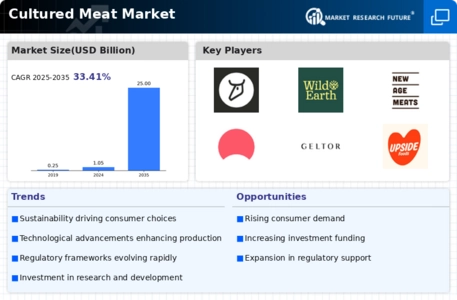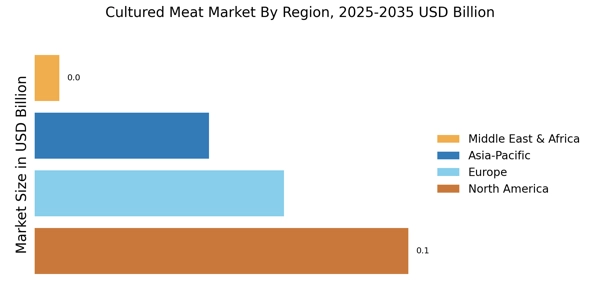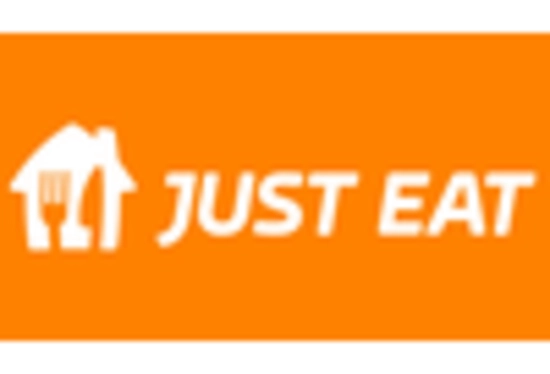Health and Nutritional Benefits
The Cultured Meat Market is also driven by the perceived health benefits associated with cultured meat products. These products can be engineered to contain lower levels of saturated fats and higher levels of beneficial nutrients compared to conventional meat. As consumers become more health-conscious, the demand for meat alternatives that offer enhanced nutritional profiles is likely to increase. Research suggests that cultured meat can be tailored to meet specific dietary needs, potentially addressing issues such as obesity and heart disease. This focus on health and nutrition positions the Cultured Meat Market favorably, as it aligns with the growing trend of personalized nutrition and wellness.
Regulatory Support and Frameworks
The regulatory landscape surrounding the Cultured Meat Market is evolving, with governments increasingly recognizing the potential benefits of cultured meat. Regulatory bodies are developing frameworks to ensure the safety and efficacy of cultured meat products, which is essential for consumer acceptance. In several regions, regulatory approvals for cultured meat products have been granted, paving the way for commercial sales. This supportive regulatory environment is likely to encourage investment and innovation within the industry, as companies gain confidence in bringing their products to market. The Cultured Meat Market stands to gain from these developments, as clear regulations can facilitate smoother market entry and consumer trust.
Investment and Funding Opportunities
Investment in the Cultured Meat Market is witnessing a surge, as venture capitalists and private equity firms recognize the potential for high returns in this emerging sector. The market has attracted billions in funding, with numerous startups and established companies vying for a share of the growing demand for cultured meat. This influx of capital is facilitating research, development, and commercialization efforts, enabling companies to scale their operations and bring innovative products to market. As the industry matures, the Cultured Meat Market is likely to see further investment, which could lead to accelerated growth and the introduction of a diverse range of cultured meat products.
Consumer Demand for Sustainable Alternatives
The Cultured Meat Market is experiencing a notable shift in consumer preferences towards sustainable food sources. As awareness of environmental issues grows, consumers increasingly seek alternatives to traditional meat products that contribute to greenhouse gas emissions and resource depletion. Reports indicate that the production of cultured meat could reduce land use by up to 99% compared to conventional livestock farming. This heightened demand for sustainable options is driving innovation and investment in the cultured meat sector, as companies strive to meet the expectations of environmentally conscious consumers. The Cultured Meat Market is thus positioned to benefit from this trend, as it aligns with the values of a significant segment of the population that prioritizes sustainability in their dietary choices.
Technological Advancements in Cultured Meat Production
Technological innovations play a crucial role in the growth of the Cultured Meat Market. Advances in cellular agriculture, bioreactor design, and tissue engineering are enhancing the efficiency and scalability of cultured meat production. For instance, recent developments in bioprocessing techniques have the potential to lower production costs significantly, making cultured meat more accessible to consumers. The market is projected to reach a valuation of approximately 25 billion USD by 2030, driven by these technological breakthroughs. As companies continue to invest in research and development, the Cultured Meat Market is likely to witness accelerated growth, with improved product quality and reduced production timelines.


















Leave a Comment